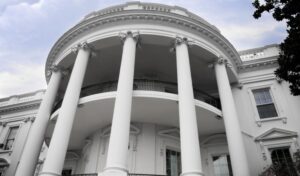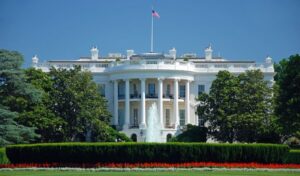PPR workshop discusses how to study government transparency programs.
On his first day as President, Barack Obama announced his administration’s “commitment to creating an unprecedented level of openness in government.” Since then, the Obama Administration has implemented a major Open Government Initiative to increase transparency, participation, and collaboration across the federal government.
With federal agencies implementing an increasing number of open government projects, researchers and federal officials have noticed how little empirical research currently exists on transparency. As a result, they have begun to focus on developing an invigorated research agenda on transparency and its impacts. What exactly are the benefits and costs of open government? How can its effects be studied empirically?
To answer these and other questions, the
Penn Program on Regulation (PPR) held a workshop in Washington, D.C. last Friday. This workshop on “Assessing Open Government: Research Challenges in Evaluating Transparency” brought together over two dozen academics, government officials, and representatives from non-governmental organizations.
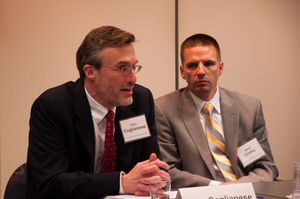
Penn Law professor and workshop moderator, Cary Coglianese (left), with Steve Croley, Special Assistant to the President for Justice and Regulatory Policy
Edward B. Shils Professor of Law and Professor of Political Science
Cary Coglianese, the workshop’s organizer and moderator, described the event as a “day of robust, interactive dialogue around a research agenda for open government.” In reflecting on the Obama Administration’s Initiative, Professor Coglianese noted that although concerns about governmental transparency date back decades and will continue for several more, the current administration has certainly heightened the salience of studying transparency.
The PPR workshop aimed to launch a collaborative research agenda from across the fields of law, social science, and information science. In the workshop’s opening sessions, participants attempted to define “open government” and develop a theory of its potential benefits and costs. Following a luncheon keynote address by
Beth Noveck, the former U.S. Deputy Chief Technology Officer who led the creation of the Obama Administration’s Open Government Initiative, workshop participants discussed both the metrics and research designs that could be used to study the impacts of increased transparency.
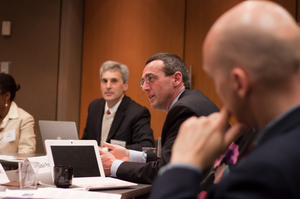
PPR Washington Dialogue on Open Government
Workshop participants agreed that the phrase “open government” encompasses a broad range of distinct, though related, policies and programs. Some of these involve releasing information retrospectively, like in Freedom of Information Act (FOIA) requests, while others proactively seek to inform members of the public so they can weigh in on pending decisions. Workshop participants seemed to agree that, for the purposes of research, the meaning of open government should ultimately be defined for each policy or program by its purpose, logic, and audience.
When it comes to assessing open government’s benefits and costs, some participants worried that although open government may reduce corruption and prevent the inefficient use of resources, it may also discourage officials from voicing important yet unpopular opinions when debating policy decisions. Others expressed concern over the time and money it takes for government to respond to FOIA requests, regardless of the value of the information requested.
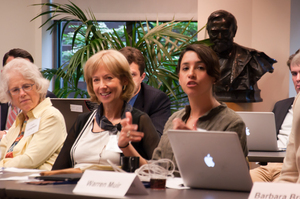
Right to left: Francisco Rojas, Harvard University; Susan Dudley, George Washington University and former Administrator, Office of Information and Regulatory Affairs; Laura Langbein, American University
However, others noted that transparency need not always compete with important values such as privacy, security, and efficiency. For example, it was noted that freedom of information laws have actually helped legal advocates uncover questionable governmental practices that impact individual privacy.
As Professor Coglianese noted in summarizing the workshop, “The benefits of open government come with concrete costs, but conversely these costs can result in real benefits.” The challenge for researchers is to identify and measure both the intended and unintended consequences.
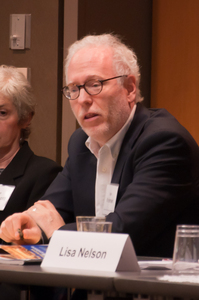
Penn Law professor, Seth Kreimer
With respect to research metrics, participants admitted that research goals and data selection will ultimately depend on the type of open government project being evaluated. Tailoring metrics to specific projects, however, may be hampered practically by cost and regulatory barriers, such as the federal Paperwork Reduction Act.
Several workshop participants noted that advances in empirical knowledge of open government will likely depend on the accumulation of many small-scale, narrowly focused research studies, rather than on one “home run” study. Researchers also urged the use of multiple research methodologies, both qualitative and quantitative.
In his closing remarks, Professor Coglianese reflected on the many challenges illuminated by the workshop that confront researchers who seek to study open government empirically. Despite these challenges, he remained hopeful because of the many productive suggestions that emerged from the dialogue indicating that additional research is both possible and needed.
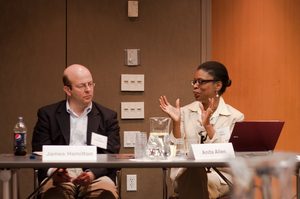
Penn Law professor and Deputy Dean, Anita Allen (right), with James Hamilton, Duke University
“It is striking how little empirical research exists on governmental transparency, despite its centrality to democracy and the rule of law, two widely-studied bedrock values of good government,” he said. “Even a little more analysis of open government could go a long way.”
PPR plans to issue a follow-on report summarizing the dialogue to help further stimulate both additional open government research as well as clearer thinking about how to design effective open government policies.








